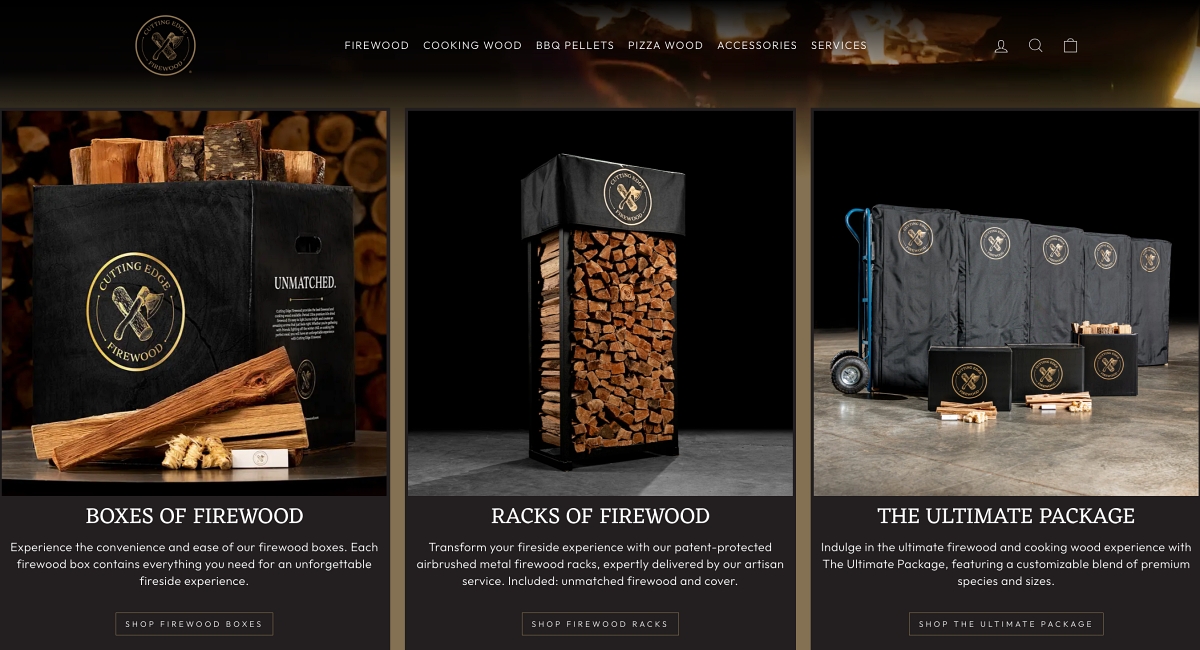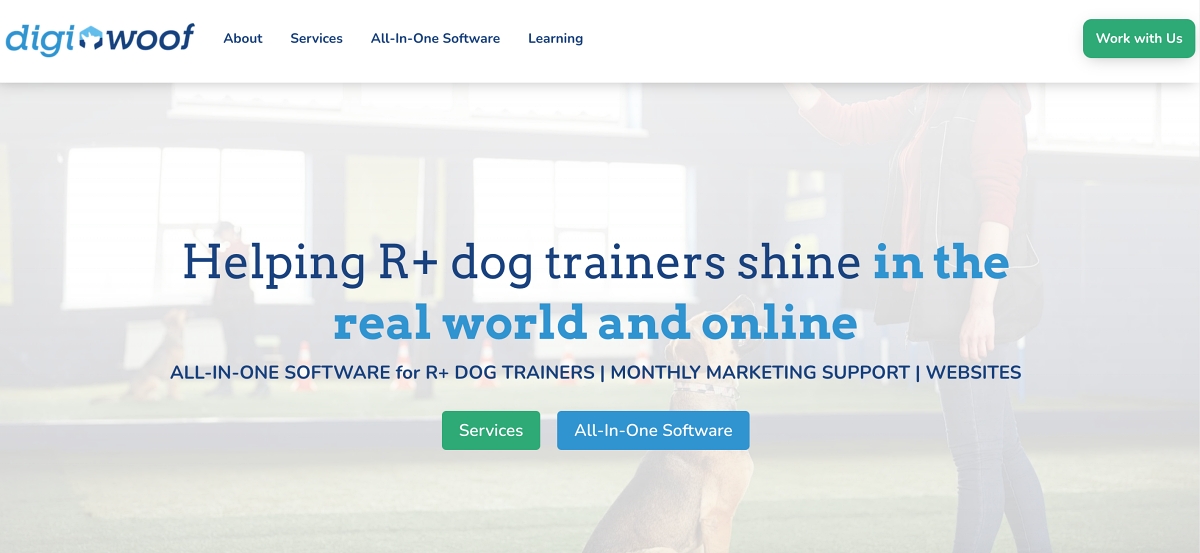
It’s that time of year again — Thanksgiving!
This summer, we caught part of the Rubik’s Cube World Championships in Seattle. The fastest solvers in the world can solve a 3×3 cube in under 5 seconds.
But what really caught my attention? There was $5,000 in prize money for first place. Another reminder that just about any skill is monetizable if you’re committed enough.
And nothing gets me more excited than finding cool, creative ways to make extra money and sharing them with you.
This is our 9th annual Thanksgiving tradition — a roundup of 10 of the most interesting and inspiring side hustles that crossed my desk this year. We’ve got product businesses, service businesses, and content businesses. Something for everyone in what’s always one of my favorite episodes to put together.
This is the 9th installment of the series, so check out the previous episodes if you like this format. Grab the full playlist here.
Here are the past editions if you want to see them individually:
- 10 Creative Side Hustles Part 1 – 2018
- 10 Creative Side Hustles Part 2 – 2019
- 10 Creative Side Hustles Part 3 – 2020
- 10 Creative Side Hustles Part 4 – 2021
- 10 Creative Side Hustles Part 5 – 2022
- 10 Creative Side Hustles Part 6 – 2023
- 10 Creative Side Hustles Part 7 – 2024
- 10 Creative Side Hustles Part 8 – 2025
Let’s talk about this year’s most innovative money-making ideas!
Sponsors
- Mint Mobile — Cut your wireless bill to $15 a month!
- Indeed – Start hiring NOW with a $75 sponsored job credit to upgrade your job post!
- Quo (formerly OpenPhone) — Get 20% off of your first 6 months!

- Shopify — Sign up for a $1 per month trial!
1. Luxury Firewood
Leroy Hite has built Cutting Edge Firewood into the world’s first luxury firewood company. I’m talking about $59 firewood boxes, $250 firewood racks, and premium cooking wood for high-end grills and wood-fired pizza ovens.

The company grew to serve 30,000+ customers, including celebrity clients, and landed appearances on Netflix and The Today Show.
Leroy realized something simple: firewood had never been disrupted. Everyone treated it like a commodity — half of it bug-infested, the rest rotten with mushrooms.
“But I realized it’s not a commodity. It’s an experience,” he says. “It’s the aroma, the crackle, the warmth, the flicker of the flame. People will pay a premium for that experience.”
His product is hand-selected hardwoods — oak, hickory, cherry, apple, pecan, maple. Each piece goes through a 48-hour kiln-drying process at 250 degrees, and trained specialists hand-select every piece, tossing out anything wet, rotten, or ugly. Only photoshoot-ready firewood makes the cut.
The turning point? In 2017, with his wife 8 months pregnant with their third child, Leroy sold their house and invested everything in the business. They moved into a rental, used the funds for a warehouse, refreshed the brand, and hired employees.
Deliveries dropped from 2 hours to 15 minutes. White glove service to wherever customers wanted. The company grew to 25 employees, eight trucks, nationwide shipping.
Leroy eventually sold his stake about a year ago for an undisclosed sum.
What’s the takeaway? Every industry has low standards somewhere. Find where everyone’s doing the bare minimum and raise the bar. Leroy didn’t invent firewood, but he just refused to accept mediocrity and turned it into an experience worth paying for.
2. Boss as a Service
Manasvini Krishna left her law career to start a tech venture and quickly realized something was missing: accountability.
When she had a job, she had deadlines and coworkers depending on her. Working for herself? None of that.
She couldn’t find a service that fit, so she built Boss as a Service. You pay as little as $25 a month to hire a “boss” who keeps you accountable.

Here’s how it works: You send them your to-dos for the day or week. They have to be quantifiable because you’ll need to prove you did them — screenshot, photo, whatever. If you don’t follow through, they follow up and don’t stop bugging you until it’s done.
Manasvini started by personally keeping users accountable. Her first customers came from the Beeminder productivity community.
Then she created a quiz called “Why Do I Procrastinate?” based on a productivity book, posted it on Hacker News, and it went viral twice.
“Multiple people were signing up every minute,” she says. “It was just me running the service. I couldn’t handle more.” She had to shut down sign-ups and start a waitlist.
Today, Boss as a Service has 2,500+ users at $25 a month. That’s over $60,000 in monthly recurring revenue. Solo founder, profitable. They’re expanding beyond basic accountability—adding coaching, goal-setting support, building a mobile app.
The takeaway? Virality is exciting but not sustainable. Manasvini struggled with rapid growth until she hired the right operations lead and learned SEO systematically. People will pay to stay on track — there’s real money in accountability services.
3. Ski Tuning
Ryan Goodwin runs Peak Rover Tuning, a ski tuning service out of his garage in Denver that brings in around $20,000 a year. It actually started as an SEO experiment with a snowboarding blog.

“I figured it couldn’t hurt to set up a Google My Business profile,” Ryan says. He put up a page advertising ski tunes, pointed the GMB to that page, and let it sit. Then the snow came, the shops got backed up, and he started getting phone calls.
It didn’t matter that he had no reviews and was working out of a garage in an alley.
Ryan charges competitive rates and offers local delivery—most of downtown Denver doesn’t need to haul their gear around.
“I think a lot of people are tired of walking into traditional shops and getting sold on new equipment,” he says. “Your gear just gets passed down the chain or tossed in a machine.”
For marketing, he just stays listed on Google and collects reviews. For something this local, it’s enough.
He connected with another local tuner who does bikes in the summer using the same model. Together, they launched an iOS app called GearFix to help others start similar businesses in their neighborhoods.
The idea is simple: if you need your gear fixed, there’s probably someone nearby who has the knowledge, likes tinkering, and could use the extra income.
The takeaway? You can swap ski tuning for niche maintenance in whatever hobby you’re into. Set up a Google Business Profile, deliver good work, collect reviews, and let local search do the heavy lifting.
4. Baseball Bat Rental Service
Oscar Urana and Eric Rico are childhood friends from Miami who turned youth baseball into a subscription business doing over $50,000 a month.
Eric got drafted by the Toronto Blue Jays, and after his playing career, he opened a youth baseball academy.
That’s where he started noticing something—kids would show up with talent but get discouraged because they couldn’t afford equipment. Quality baseball bats cost $300 to $500 upfront, and for families with kids constantly growing and needing new gear, that’s just not in the budget.
So they launched Bat Club USA, essentially a bat rental subscription. Instead of dropping $500 all at once, families pay monthly starting as low as $17 a month for younger players, going up to around $45 for older kids using higher-end bats on twelve-month contracts.

Before going all in, they tested with 15 families at Eric’s academy and got overwhelmingly positive feedback.
That gave them confidence to invest $40,000 of their own money plus backing from friends and family, buy enough inventory to serve 2,000 members, and store everything in Eric’s garage while using his pro baseball connections to source the bats.
Their marketing was hands-on at first—they’d show up at major tournaments in Texas and Florida, set up a booth, and let kids walk away with a bat that same day.
Subscribe right there, instant value. Those kids basically became their salesforce, and later they scaled up with Facebook ads targeting parents who were already following baseball-related brands.
The takeaway? Test your idea first. Those 15 families proved the concept worked before they scaled. Now they’re looking at expanding into other youth sports using the same rental model.
5. Cleaning Car Seats
Shelby Merrill is a stay-at-home mom in Utah who started a car seat cleaning business and made $1,000 profit in the first two weeks. Within four months, she’d earned $5,600 from cleaning over 100 car seats, plus $6,000 from teaching others how to do it.
Car Seat Scrub Club came from her own frustration. “Cleaning car seats is the worst,” she says. “My kids’ car seats are always dirty, and every time I clean them, I think, ‘There needs to be someone who does this.’ I could be the someone who does this.”
Shelby charges $40 per seat plus a $15 to $25 travel fee depending on distance. After she puts her kids to bed at night, she drives around picking up car seats—anywhere from one to five a night.
She brings them home to her garage, disassembles them, cleans according to each manufacturer’s manual, lets them air-dry overnight, then returns them before 9 a.m. with a bow and thank you note.
She made a “night in the life of a car seat cleaner” video and cross-posted it to TikTok. It went viral with 2.6 million views.
https://www.tiktok.com/@shelbymerrill_/video/7509208223841455406
In two days, she went from 6,000 followers to 30,000. The virality brought business but also competitors who watched her videos and started their own car seat cleaning businesses in her area.
When her DMs exploded with people asking how to start their own business, she realized she could monetize that too.
She launched Scrub Club Courses with a $500 ultimate business plan and a $75 mini course. She’s now expanded to two counties and hired two other cleaners to cover four additional counties in Utah.
The takeaway? Look around at the things you hate doing. Chances are other people hate doing them too and will pay someone to handle it.
6. The Swiftologist
Zachary Hourihane quit his marketing job to be a full-time Taylor Swift content creator.
Today he’s got 250,000+ followers across YouTube, TikTok, and Instagram, and was featured in HBO’s documentary about the Swift-Scooter Braun controversy.
Zachary’s a journalist by training who noticed that articles have limited reach these days. “Your main goal as a writer is for your ideas to be heard,” he says. “But video-first content reaches a much wider audience in a more engaging manner.”

His reaction to Taylor’s Folklore album gained traction, and when his day job started laying off writers, he decided he wanted to own what he did.
In 2022, he started treating it like a full-time job while still working in marketing, and two years later it actually became one.
He co-hosts a podcast called Evolution of a Snake that goes year by year through Taylor’s entire catalog and career, pulling 50,000 to 100,000 weekly listeners.
The free version is wherever you get your podcasts, but the real money comes from Patreon — exclusive episodes, deep dives, content that’s too spicy for the algorithm.
15,000+ Patreon subscribers paying between $3 to $25 monthly.
What makes Zachary different from other fan creators? He’s critical. He did a video essay about Taylor’s billionaire status and private jet usage, and the Swiftie community did not love that.
He’s actually gotten death threats before. “People misconstrue me wanting to critique her as me being a covert hater,” he told Pedestrian.tv. But he’s seen her in concert 21 times, met her at secret sessions, and calls her the world’s greatest songwriter. He just refuses to pretend she’s perfect.
His advice for building an audience? Be consistent and show up week after week. “People will meet you where you are, but you have to show up for them frequently,” he told Authority Magazine. The best audience isn’t the biggest one—it’s the most engaged one.
The takeaway? Could you do this in your niche? Gaming, sports, TV shows, whatever you’re obsessed with? The playbook is there: bring real expertise, be consistent, build community, monetize through subscriptions.
7. Reading Reddit Posts
Here’s a content model that’s almost absurdly simple: read Reddit stories out loud and ask, “Am I the jerk?”
That’s essentially what Am I the Jerk? does. They take stories from Reddit — usually from the “Am I the A**hole” subreddit — have voice actors perform them, add some commentary, and publish daily.
They’ve got a YouTube channel with over 1 million subscribers and a podcast with the same content that has over 12,000 reviews on Spotify.
Example titles: “Vegan friend demands we eat a vegan thanksgiving dinner,” “Entitled mom wants me to babysit her 3 kids for free,” “Chinese restaurant reuses customers’ leftover food to save money.”

It’s Reddit content arbitrage, and it’s working. People submit their real-life conflicts to Reddit asking if they’re in the wrong.
Am I the Jerk? takes those stories, dramatizes them with voice acting, and packages them as 20-minute episodes.
People listen while driving, studying, working out, doing chores. The stories are relatable — overbearing parents, entitled coworkers, frustrating partners.
They’ve also got a spin-off show called “Am I the Genius?” using the same model.
The genius here is they’re not creating the core content — Reddit users are creating it every day.
You never have to worry about running out of material. No scriptwriters needed. The stories are free.
The only real cost is voice actors and production time, and the recent ones sound like fairly low-grade AI voices but somehow still have people tuning in.
The takeaway? Curation and repackaging can be a business model. You don’t always need to create original content from scratch. Sometimes the content already exists — you just need to make it more accessible, more entertaining, or present it in a different format.
8. Proposal Planner
Lexi Tobin helps people plan marriage proposals in New York and has built it into a 6-figure side hustle while working full-time in corporate advertising. In her best month, she made over $20,000.
It started in 2019 when her brother-in-law asked for help proposing to her sister. Lexi went all-in—lights, flowers, candles, the works—then filmed her sister running down a white runner into her fiancé’s arms.
A few months later, she posted the proposal video on TikTok and went viral—100 million views.
@lexitobin Engagement #2019 #fyp #foryourpage
Friends, family, and strangers started asking her to help with their proposals, so she started charging for it.
She typically hires one to three vendors per event—photographer, florist, maybe a musician. A proposal with five vendors can cost upwards of $10,000.
Lexi keeps about 15% of the event planning fees as profit, but she also makes money from brand deals and affiliate marketing through TikTok, where she has nearly 330,000 followers, and Instagram.
She posts the proposal reactions, and the content drives more clients and brand partnerships.
Over 12 months, she brought in six figures in revenue with a median monthly income of $9,000. She’s not just doing proposals anymore—bridesmaids’ proposals, engagement parties, birthday parties, even full weddings.
Lexi still works full-time as a director of account management, spending up to 40 hours a week on her side business and 60 hours at her day job. She invests all her side hustle earnings into the stock market and lives off her corporate salary.
According to The Knot’s 2023 Real Wedding Study, one in four proposers now pay someone to help them pop the question.
The takeaway? Find a high-emotion moment in someone’s life where they need help but don’t know where to start.
9. Wooden Bow Ties
Paul Kaster started woodworking at age 12 after watching YouTube videos. When someone gave him a wooden bow tie as a gift, he thought it was chunky and poorly finished. So he figured he could do better.
Paul wanted a “Goldilocks” version — something that looked and felt like a classic fabric bow tie but made from wood.
He then used PowerPoint to design the profile before graduating to CAD software, then added fabric in the center to make it less cold and easier to customize.
He sourced reclaimed exotic woods — walnut, cherry, maple, zebrawood, cocobolo — and priced each bowtie between $40-$50.
Paul listed them on Etsy, where natural search drove initial sales. These sold way better than anything else he’d made, and customers started requesting customizations like laser engraving for initials and dates.
Paul then set up his own storefront called Crooked Branch Studio, which led to about $6,000 in increased sales and got him featured on NPR’s “How I Built This” podcast.

While still in high school, the business hit $40,000 in revenue and $20,000 in profit in a single year.
When college happened, Paul hired three contractors and partnered with manufacturing companies for production.
This let him continue selling over 2,000 wooden bow ties a year while studying at USC, pulling in around $1,000 a month in profit with less than one hour per week of his time.
He later expanded with Carbon Cravat — bow ties made from aerospace carbon fiber, marketed as “the bow tie made from rockets.”
The takeaway? Paul saw a product category that already existed but wasn’t done well. He didn’t invent wooden bow ties—he just made better ones. And when college hit, he systematically replaced himself with contractors and turned a labor-intensive operation into passive income.
10. Marketing Agency for Dog Trainers
Josh Boutelle is running a marketing agency in Oregon with his wife that’s generating over $10,000 a month. The catch? They only work with dog trainers.
The business is called Digiwoof, and it’s the kind of hyper-focused niche agency that most people would dismiss as “too small.” But that’s exactly why it works.

Josh isn’t some random marketer who picked dog trainers out of a hat. He spent over 10 years running his own certified dog training business in San Francisco called City Pups SF, helping dog owners deal with leash reactivity and separation anxiety.
So he knows the industry, the clients, and what dog trainers struggle with.
Digiwoof offers everything a dog trainer needs to market themselves online—website design, graphic design, social media marketing, email and SMS marketing, process automation.
Josh understands the specific pain points—dog trainers don’t want to mess with tech; they want to train dogs. So he builds systems that automate client onboarding, appointment scheduling, follow-ups, all the admin stuff that keeps trainers from doing what they actually love.
He’s got a podcast called The Digital Dog Trainer and writes blog posts about how dog trainers can use mini-courses to market themselves, grow an email list, and manage Google reviews.
Josh uses the software HighLevel to deliver standardized services at scale. People are doing this exact thing for tattoo parlors, music teachers, pawn shops, dance studios, and churches using the same model.
The takeaway? Most people think niching down is limiting, but Josh proves it’s the opposite. When you own a niche like that, $10K a month is just the starting point.
Honorable Mentions
- Jesus Photos: Earning $200 per hour posing as Christ for holiday cards and religious content.
- Digitizing VHS Tapes: Converting old VHS tapes and photo albums for $500 a month.
Happy Thanksgiving to you and your family! Be sure to take a moment for gratitude today and every day to appreciate what you have and how far you’ve come.
What innovative business might you start in 2025?
Looking for More Side Hustle Help?
- Start Your Free $500 Challenge. My free 5-day email course shows you how to add $500 to your bottom line.
- Join the free Side Hustle Nation Community. The free Facebook group is the best place to connect with other side hustlers and get your questions answered.
- Download The Side Hustle Show. My free podcast shares how to make extra money with actionable weekly episodes.













